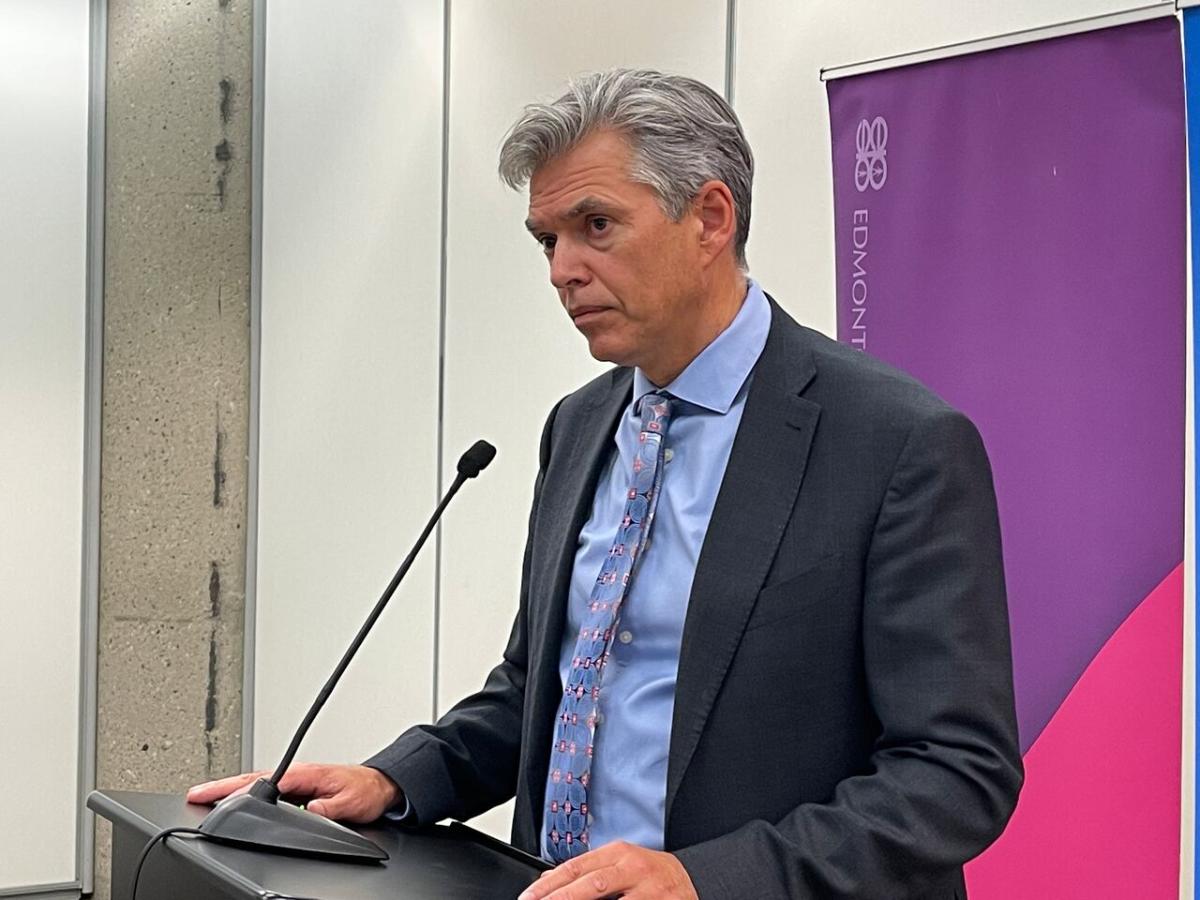Edmonton police officers could be stationed again in some city public schools by the winter 2025 semester, says Edmonton’s public school superintendent.
More than four years after halting the school resource officer (SRO) program in response to student and community concerns, the school board reopened the door to school-based police last April.
Edmonton public schools superintendent Darrel Robertson told the school board at a meeting last week the division is negotiating the terms of a new arrangement with Edmonton Police Service.
“We want to make sure that the SRO program is well conceptualized,” Robertson said at the Sept. 10 board meeting. “It’s building off what was, but looking at some opportunities on what could be.”
Depending on how long it takes to train officers, there could be up to six of them working in public schools before the end of the 2024-25 school year, he said.
Rolling out the program across the division could take several years, he said.
Police officers worked in 21 city public schools before the division halted the program in September 2020.
The school division has grappled with the issue, holding tense meetings with public presenters calling for the division to keep police in schools or remove them.
The board commissioned a $150,000 academic study, which found researchers did not have access to enough data to say whether police stationed in Edmonton schools led to more students facing charges or an earlier involvement with the criminal justice system.
However, two independent researchers found that in a decade-long period, the SRO program led to thousands of suspensions, hundreds of expulsions, and tens of thousands of students tagged as “offenders” in Edmonton schools.
Opponents of police working in schools say it can lead to children becoming unnecessarily criminalized for problems that could be dealt with by teachers, mental health professionals or social workers.
People who’d had negative interactions with SROs have told the school board the officers made them feel targeted, harassed, unwelcome and unsafe.
Some principals told the board they’re ill-equipped to deal with crime in schools, such as students bringing weapons or selling drugs, and asked for police to return.
New SRO program model, cost undecided
Before its demise, the SRO program cost the school board about $1.2 million each year. Police paid the other half of the cost.
Neither police nor the school division could answer questions last week about how much a new program would cost, what role the school division would have in hiring or training SROs, or how the new program would differ from the previous one.
Police spokesperson Cheryl Sheppard said in an email the police and school division are still working on those details in a memorandum of understanding.
After the board’s April decision reconsidering the placement of police in schools, a working group of representatives from the police department and school division met to “explore, develop and implement a model of school safety that includes police working directly in school communities,” division spokesperson Kim Smith said in an email.

Eric Crowther is an Edmonton defence lawyer who says research evidence does not suggest that placing police officers in schools makes schools safer for students. (Submitted by Eric Crowther)
Eric Crowther, an associate lawyer at Engel Law, said the reintroduction of officers is concerning and disappointing. Members of his law office have previously presented to EPSB opposing the SRO program.
He said American research academics relied upon when studying the issue for the school division showed there’s no evidence the officers make schools safer.
“If the goal is to create a safe and inclusive atmosphere for all students, this is a step backwards,” Crowther said.
If it must have a program, the school division should have a say in whether or not to hire an officer, conduct thorough background checks for a history of complaints against the officers, and should screen candidates, he said.
Training should include education about students with behavioural disabilities, who Crowther said are disproportionately targeted by school-based police, along with racialized youths.
Students should also have an effective mechanism to complain about troubling interactions with school-based police, he said.
Kenilworth Grade 9 student Nicolas Nguyen, who has previously spoken to the board about his concerns, said it worries him to know armed police will be back in school halls.
“I do not feel safe knowing that there is a loaded firearm in a place where I’m supposed to be learning,” Nguyen said in an interview last week.
He pointed to the case of 28-year-old Mathios Arkangelo, who Edmonton police shot and killed after he was involved in a collision in June. Arkangelo’s family is suing the police, saying his death was unjustified.
Edmonton Catholic Schools has 14 SROs working in 17 junior and senior high schools. That division also commissioned a study on the program, but it has continued uninterrupted.

